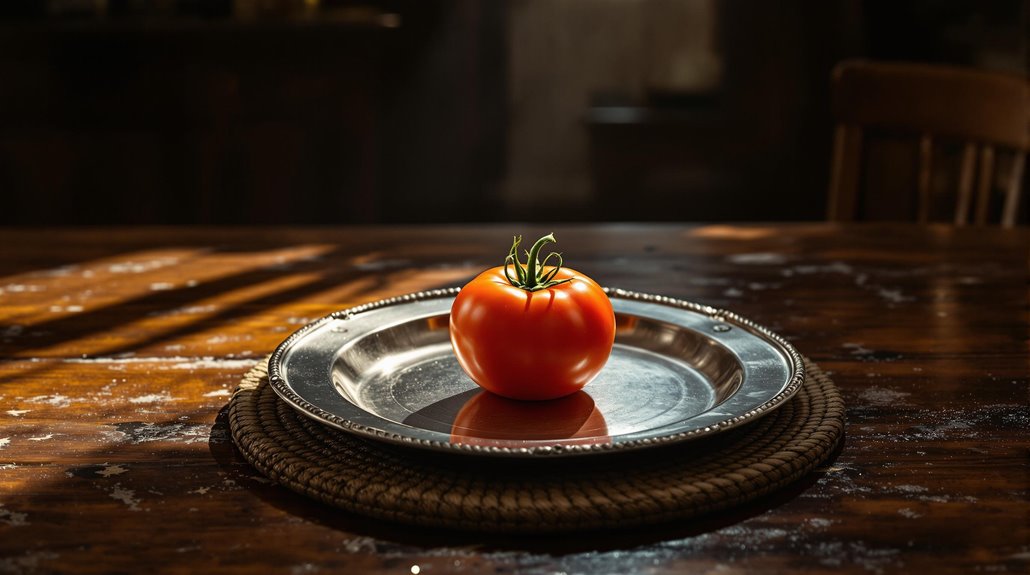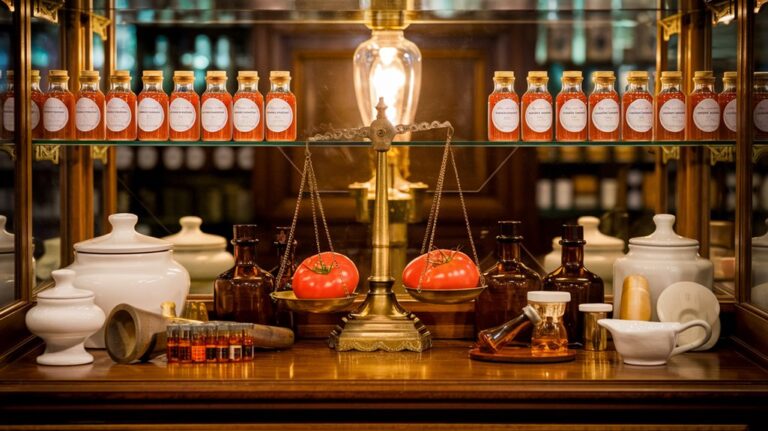Europeans Once Believed Tomatoes Were Poisonous
You wouldn't think twice about biting into a juicy tomato today, but five centuries ago, that simple act could have marked you as either brave or foolish in European society. When these bright red fruits first arrived from the Americas, they earned the ominous nickname "poison apples" and found themselves banned from noble dining tables. What transformed this feared nightshade into a cornerstone of European cuisine? The answer lies in a fascinating tale of science, class warfare, and culinary revolution.
A Feared Fruit From the New World

When Spanish conquistadors brought tomatoes from Mesoamerica to Europe in the early 16th century, they couldn't have predicted the fear and suspicion these fruits would inspire.
These small, yellowish fruits, native to the South American Andes, were initially grown only as ornamental plants due to widespread cultural perceptions of their danger. The Aztecs called them tomatl, which gave us their modern name.
The tomato's culinary evolution was stalled by dark associations. You might be surprised to learn that Europeans nicknamed it the "poison apple" after several aristocratic deaths. The deaths were actually caused by lead leaching from pewter plates and utensils used by wealthy diners.
They even believed tomatoes could transform people into werewolves or serve as ingredients in witches' flying potions. The fruit's introduction unfortunately coincided with Europe's witchcraft panic, further cementing its sinister reputation.
Despite Italian herbalist Pietro Andrae Matthioli documenting tomatoes in 1544, it would take nearly two centuries before Europeans dared to eat them regularly.
The Deadly Nightshade Connection
The fear of tomatoes wasn't entirely baseless – they belong to the infamous Solanaceae family, commonly known as nightshades. This diverse plant family includes both edible members like potatoes and peppers, as well as toxic species containing dangerous alkaloids.
Understanding this connection helps explain the historical misconceptions about tomato toxicity. Many of these vegetables contain important vitamins and nutrients that provide significant health benefits.
When European botanists first encountered tomatoes, they noticed similarities to deadly nightshade, a poisonous relative. Pietro Andrae Matthioli classified them as toxic, and John Gerard's influential Herball reinforced these fears. The nickname "poison apple" spread as people confused tomatoes with their more dangerous cousins. The upper class aristocrats frequently experienced illness after eating tomatoes due to their acidic reaction with lead-containing pewter plates.
While tomato plants do contain solanine and tomatine in their leaves and stems, the ripe fruits you'll find in your kitchen contain such minimal amounts that they're perfectly safe to eat.
From Royal Tables to Peasant Plates
Despite their exotic origins, tomatoes faced a peculiar class divide in European society. While aristocrats initially feared these fruits due to deadly misconceptions, the nobility's pewter plates were actually to blame. When tomatoes' natural acids contacted the pewter, they leached toxic lead, leading to numerous deaths wrongly attributed to the fruit itself.
Meanwhile, you'd find a different story among the lower classes. Poor Italians, eating from wooden plates, embraced tomatoes without incident. These peasant cuisines pioneered tomato-based dishes, including early versions of pizza in Naples. Modern varieties like the Costoluto Genovese are mid-summer harvest tomatoes that carry on this Italian tradition. Early Italian culinary pioneers would prepare tomatoes fried in oil, similar to how they cooked mushrooms.
What started as aristocratic misconceptions about "poison apples" transformed into widespread acceptance by the late 1700s. The humble tomato's journey from feared fruit to culinary staple shows how peasant innovation often trumps upper-class prejudices.
Today, you'll find tomatoes essential in cuisines worldwide.
Scientific Myths and Medical Fears
Medical fears surrounding tomatoes flourished during an era when scientific understanding remained deeply entangled with superstition and folklore.
You'd find these scientific misconceptions deeply rooted in the medical beliefs of the time, when doctors still practiced bloodletting and blamed "bad air" for disease spread. Similar to how many innocent people with medical condition porphyria were wrongly accused of vampirism during the Spanish Inquisition. The average life expectancy was only 30-35 years during these times of medical uncertainty.
Medical folklore about tomatoes gained strength due to several common beliefs:
- Wealthy people got sick after eating tomatoes (though it was actually their pewter plates reacting with the fruit's acids)
- The plant's resemblance to deadly nightshade convinced people it was poisonous
- Doctors couldn't distinguish between toxic and safe nightshade family members
- The era's limited scientific knowledge allowed myths to persist unchallenged
These fears persisted until scientific advancement and improved understanding of botany finally debunked these misconceptions.
The Rise of Tomato Acceptance

While Spanish explorers introduced tomatoes to Europe in the 16th century, you wouldn't find these fruits on dinner tables for generations to come. Initially, Europeans grew them purely as ornamental plants, with acceptance spreading gradually from Southern Europe northward. Many aristocrats became ill after eating tomatoes because their pewter plates contained high levels of lead.
The culinary evolution began in Spain and Italy, where you'd start seeing tomatoes in kitchens by the early 18th century. The earliest documented Italian culinary use appeared in Neapolitan recipes of 1692. A major turning point in their cultural integration came with the invention of pizza in 1880s Naples, especially after Queen Margherita's famous endorsement.
When Francesco Cirio built Italy's first tomato cannery in 1875, it marked the beginning of widespread commercial use. The American Civil War further boosted demand for canned tomatoes, and by the 1870s, new commercially viable varieties emerged.
Today, you'll find tomatoes as staples in kitchens worldwide.










